"Hey we are not in Kolkata and I want to have Kolkata Mutton Biryani! Can we make some?"
If you love me; you will give me the Nolir Har from your Mutton Biryani!" (Nolir Har is the heavenly marrow bone)
"Hey, I am feelling blue! It was a tough day at the office! Can we have homemade Kolkata Mutton Biryani"
"We don't have a budget to celebrate the birthday grandly this year! Will Mutton Biryani do?"
Jump to:
- My Kolkata Biryani Recipe!
- Kolkata Mutton Biryani or Kolkata Biryani! Why this name? Isn't it regular Mutton Biryani?
- Kolkata Mutton Biryani, the evaluation!
- The linkage with Lucknow!
- Pro Tips for cooking Kolkata Mutton Biryani!
- Perfect Kolkata Biryani Tips
- Here's how I cook Kolkata Mutton Biryani at Debjanir Rannaghar!
- Recipe Card
- Calcutta Mutton Biryani Recipe Video
- Meat-based dishes from Debjanir Rannaghar!
- Have you tried the Kolkata Mutton Biryani recipe from Debjanir Rannaghar!
My Kolkata Biryani Recipe!
I can have the Mutton Biryani at any point in time. I am quite shameless and proud of this. To me Biryani is emotion. Well, by Mutton Biryani I am specifically referring to the typical Kolkata Mutton Biryani; where Aloo is as important as the meat chunk. Not that I do not eat other varieties however Kolkata Biryani is bliss and is the epitome of comfort food at least to me.
This probably is the reason it took me more than 10 years to come up with the recipe for Kolkata Biryani. I had it N number of times in between though. Be it when for the first time I told my family about Mehebub; it was over Kolkata Mutton Biryani. This was part of our humble marriage feast. We had it as part of Pasta's naming ceremony as well as the 5th Birthday feast.
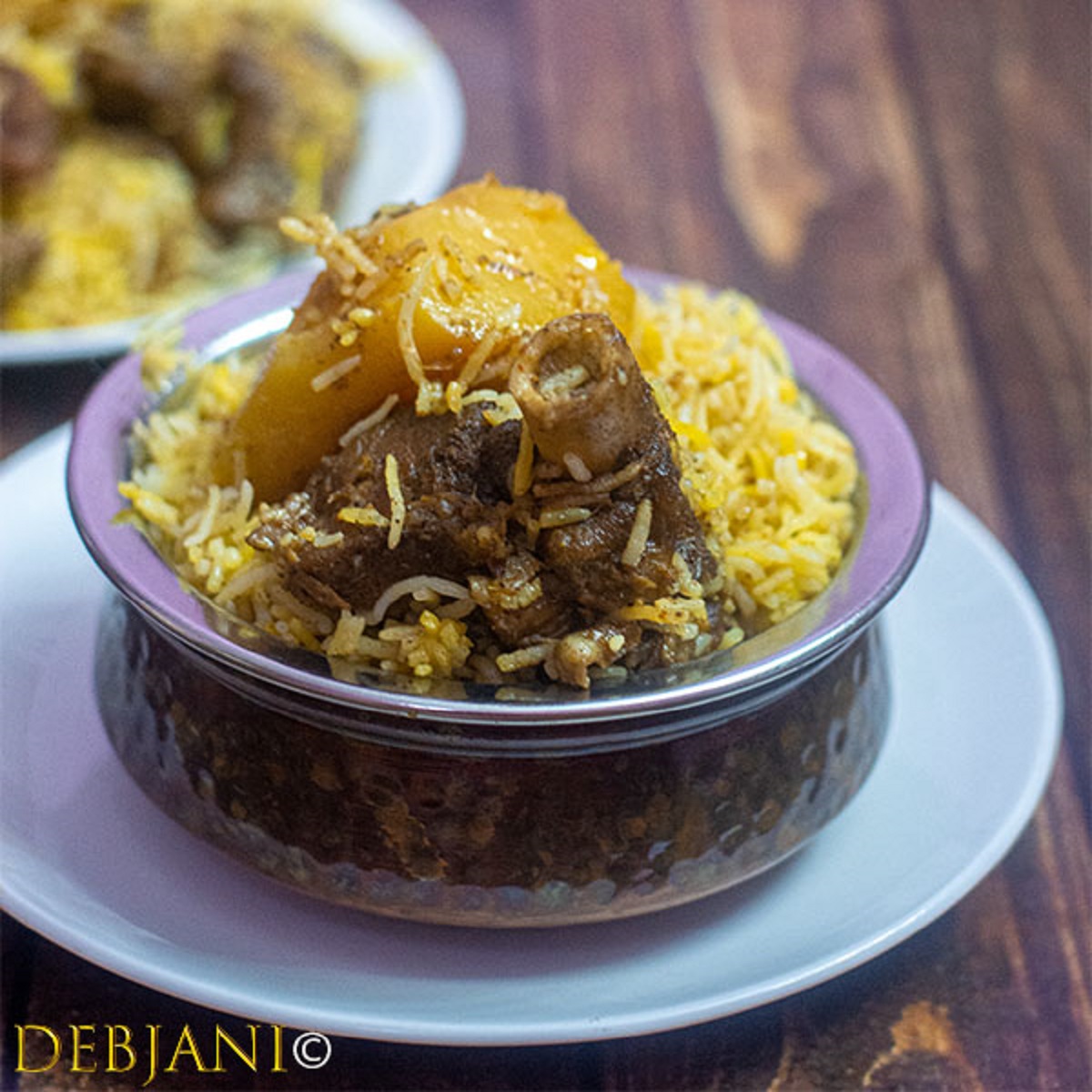
Kolkata Mutton Biryani or Kolkata Biryani! Why this name? Isn't it regular Mutton Biryani?
Kolkata Biryani is descendant of Awadhi Biryani which is, in fact, a known fact. This Biryani is signified by the aromatic rice; soft chunks of meat and most importantly the presence of Potato in it. In fact, potato makes it different. For further details, you may refer to my Kolkata Biryani or Biryani in Kolkata post as I am going to elaborate on the recipe mainly in this blog post.
Kolkata Mutton Biryani, the evaluation!
What we have today as Kolkata Biryani is all thanks to the 10th Nawab of Lucknow, Wajid Ali Shah. Nawab was dethroned and banished from his homeland (read Audh) by the British. He was then relocated to Kolkata with his family. Not only did his family but he came here to Calcutta with his Chefs and staff. In Kolkata, he commissioned a replica of his old Capital in the Metiaburuz area of the city.
The linkage with Lucknow!
As I already mentioned, Nawab came with his set of Bawarchis and they ended up making a Kolkata version of Biryani which is signified by the presence of Aloo. They basically used local produce as part of their cooking and gave birth to a different genre of food. A set of people opined that potato was used because of the reduced worth in the Nawab's family. According to them, Alu was cheap at that time and hence was economical and included in Biryani. On the other hand, Nawab's family members are of the opinion that Aloo or Potato was an exotic vegetable at that time and hence the Bawarchis included it in Biriyani.
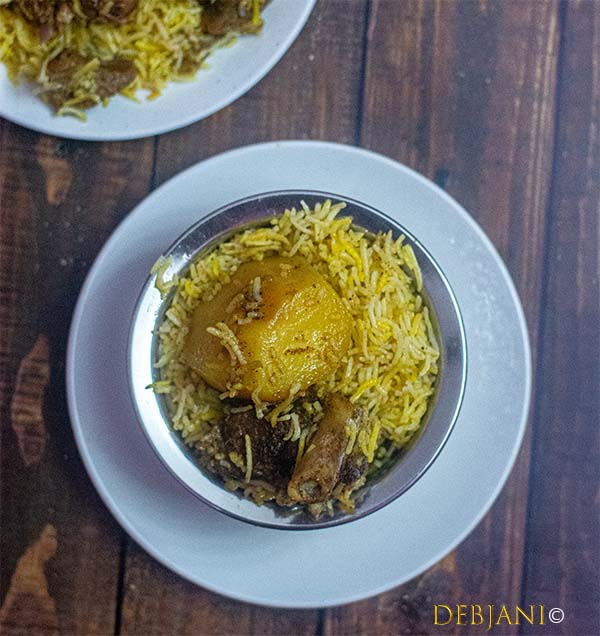
To me, both theories are equally interesting. Who can ignore the exoticness of Potato back in the 19th century on the other hand Biryani was a wholesome dish served to normal people as well then. Needless to say, another theory is also matching. By the way who cares, how Alu came? The important thing is we love the chunk of Aloo as part of our plate of Kolkata Biryani. Don't we?
My learning phases of cooking Restaurant style Kolkata Biryani!
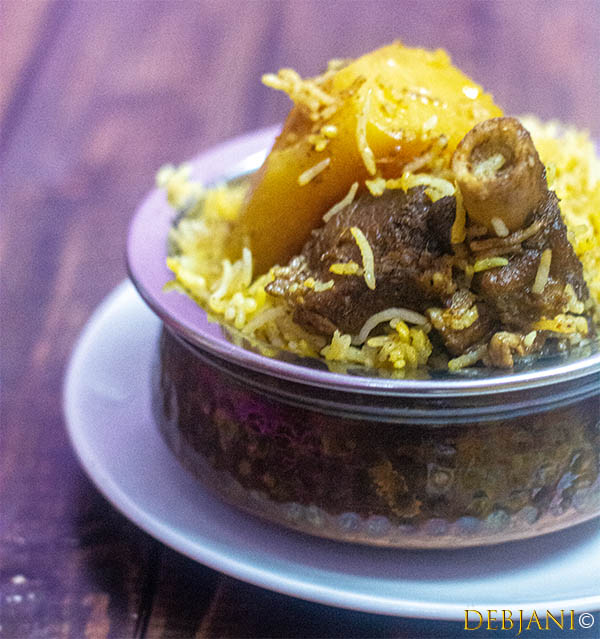
Not that I have not tried cooking it at home however, the result was not a restaurant-sty;e biryani initially. I watched Bawarchis making the Biryani on occasion and a few tips that they shared helped me to learn the process of cooking Kolkata Biryani. I had it at almost all known and unknown Biriyani eateries in Kolkata and in other cities and in villages of West Bengal. One thing I understand it is difficult to get that particular flavor and texture at home.
There are certain perks when you are married to somebody who shares a different religious faith. We come to know about the beauty of other religions. We started knowing the culture, and food very closely. In our case, I am married to a Bengali Muslim and fortunately, we rejoice in both the religion; mine, and his. Let us take Biryani as an example. After Pasta's birth, we celebrated both Hindu Annaprashana and Muslim Akika, and needless to say food played a pivotal role in both programs.
Biryani during Pasta's Naming Ceremony!
We celebrated her Akika at Dadu and Dadi's place in the year 2014. My in-laws literally outdid themselves! I was shocked to see the arrangement and especially the grand arrangement of Mutton Biryani. A Bawachi was called from the nearest village just to make the Biryani for 300 People. I waited with patience and watch him make the Biryani
Pasta's 5 years Birthday feast was having Kolkata Biryani cooked by a famous Biryani Chef from Kolkata!
We have contacted one of Kolkata's famous caterers to make the Kolkata Biryani for Pasta's 5th Birthday feast. This particular caterer is known for its food. They are the first choice when it comes to handing over the cooking to a third party at my parent's place. I actually contacted a few restaurants in Kolkata to make the Biryani and finally ended up selecting the caterer who was happy to cater to my need of not limiting the meat pieces to one or two. They handed over the responsibility of making the Biryani to a Biryani Chef from the city. The Briyani was brilliant at least that is what I was told by most of the guests.
Pro Tips for cooking Kolkata Mutton Biryani!

Perfect Kolkata Biryani Tips
- Meat to Rice ratio should be 2:1; being said that if you are using 1 kg mutton; there should be 500g of Rice.
- Good quality whole potatoes are a must. Try to use starchy potatoes.
- The rice should be whole, long, and flavored Basmati and preferably old and seasoned. It is better to use the best quality possible. Ask for "Biryani Rice" specifically.
- Ask for 100g of Fat separately while purchasing the mutton.
- Biryani meat chunk is different from Curry cut. Get the meat cut accordingly.
- The proportion plays a very important role while making biryani. It is better to cook it in bulk to get the ultimate result. 1kg meat and 500g rice and proportions bigger than that are ideal.
- The quality of the utensils used is very important. Use a thick bottom Handi to make perfect Biryani.
- Typically they do not add Birista while assembling the biriyani in the restaurants instead it is added while cooking the mutton.
- Aloo Bukhara is a must.
- Restaurant to restaurant texture varies and so does the taste. You will get almost yellowish biriyani at Arsalan or Shiraz while Royals' Biryani is a bit on the white side. For that matter, Royal's biryani is not typical Kolkata Biryani. In Sabir's the rice is a mixture of white and yellow and so on.
- Egg these days is part of special Biryani only in Kolkata, however, you can add it if made at home. I prefer not to add it.
- Last but not least the process of making Kolkata Mutton Biryani is elaborate and complex however it is worth all the time and complexity.
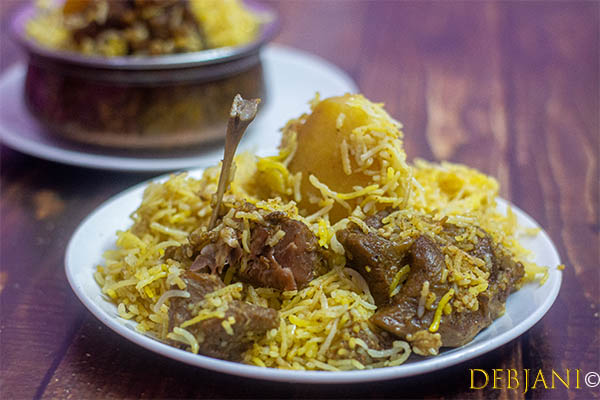
Here's how I cook Kolkata Mutton Biryani at Debjanir Rannaghar!
PrintRecipe Card
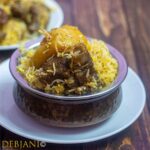
Kolkata Mutton Biryani | Calcutta Biryani
- Total Time: 10 hours 30 mins
- Yield: 6 People 1x
Description
Kolkata Mutton Biryani is a flavorful delicacy cooked with mutton chunks, rice, potato, and boiled eggs (optional).
Ingredients
- 1 kg Mutton (around 10 pieces; Biryani cut); with extra 100g fat
- 500g Whole-grain flavored Basmati Rice
- 10 Aloo Bukhara
- 6 Boiled Egg (Optional; I skipped it)
- 5 Large Potato
- 2 Onion (This is to make "Birista")
- 2 Pinch Yellow food color
- 200ml vegetable oil (This is to fry both Potato and Onion and to make Tehr)
- 1 Tbsp. Green Chili Paste
- 4 Tsp. Salt (will be used all through)
- 75g Ghee
- 50g Khowa
- 15 strands Keshar
- 200ml Milk
- 4 drops Mitha Itrt
- 1 Tbsp. Keora Water
To make Biriyani Masala:
- 2" Cinnamon
- 2 Black cardamom
- 5 Green cardamom
- 4 Clove
- 2 Bay Leaf
- 1 Nutmeg
- 4 petals Mace
- 1 Tsp. Shahi Cumin Seed
- 1 Star Anise
- 10 Kebab Chini
- 10 White Pepper
To cook Mutton:
- 2 Onion
- ½ cup Birista
- 1 Tbsp. Papaya skin paste
- 1 Tbsp. Green Chili Paste
- 1 Tbsp. Ginger Paste
- 2 Tbsp Garlic Paste
- 150ml Plain Curd
- 50ml Mishti Doi / Sweet Curd
- 2 Tbsp.Tomato Ketchup
- ½ Tsp. Turmeric Powder
- 3 Dry chilies
- 2 Bay Leaf
- 2 Tbsp. Ghee
- ½ of the oil from remaining oil from frying potatoes and onion
- 4 Clove
- 1" Cinnamon Stick
- 2 Black Cardamom
- 4 Green Cardamom
- Salt (already mentioned)
To make Akhni Water:
- 4" Cinnamon Stick
- 2 Black cardamom
- 4 Green cardamom
- 4 Cloves
- 4 Bay Leaf
Other:
- 1 cup Wheat Flour dough (For sealing the Utensil/ Aluminium Foil)
- 30 Bay leaf A bunch (to place inside the utensil while cooking the Biryani)
Instructions
- As the process is elaborate; I am writing down phase by phase to help you to understand what to do next.
Making of Biriyani Masala:
- Dry roast all the spices mentioned under the head of Biryani Masala.
- Once cooled, make a powder of the spices.
- Around 2 Tbsp. of this powder will be used in the Biryani.
- Store the masala in an airtight container for further use.
Marinating the Mutton (stage 1 & 2)
- Marinate mutton with Papaya glue and 1 Tsp. Salt for 8 hours.
- After 8 hours Mix Onion paste, ginger paste, Garlic paste, green chili paste, and also crushed Birissta along with plain curd, sweet curd, and also sahi jira paste (optional). Turmeric powder, tomato ketchup with ¼ tsp. salt.
- Add 1 Tsp. of Biryani Masala as well along with and marinate the mutton with the spices for 2 hours.
Making of Birista and Fried Potato:
- Finely chop Onion.
- Heat oil in a pan.
- Fry the onion till they are crisp.
- Strain from the oil.
- Peel and cut potatoes in half. If using medium-sized potatoes keep those wholes.
- Marinate potatoes with a mixture of yellow food color and ¼ Tsp. Salt.
- Heat the same oil used for making Birista.
- Temper the oil with 1" Cinnamon, 1 Black Cardamom, 2 Cloves, and green cardamom.
- Fry potatoes until they are golden in color and 70% cooked.
- Add ½ Tsp. Biryani Masala to it as well.
- Strain fried potatoes from the pan.
- Use the same oil for cooking mutton.
Cooking the Mutton:
- Heat Ghee and ½ of the spiced oil used in frying Onion and Potato in a deep bottom pan and temper it with bay leaf and dry red chili, bay leaf, mace, nutmeg, cinnamon, and cardamom.
- Add marinated mutton with the marinade and mix.
- Cover the pan with a lid and cook over low flame for around 1 hour or till the mutton is done 70%.
- You do not need to add water. Mutton will be cooked in its own water.
- Once the cooking is done the pan will have cooked meat and the oily substance separated.
- This oily substance is known as "Tahr".
- Separate the Tahr when the meat is hot from the pan and keep it aside.
- This makes the biryani flavorful.
To make Akhni Water and cooking the rice:
- Take 2 liters of water in a vessel.
- Take the spices mentioned under the head "Akhni Masala" and make a "Potli using a fresh cloth with the spices.
- Boil the spice potli along with the water for around 30 minutes.
- The water will change color and will turn light brown in color.
- Meanwhile, wash rice 2-3 times under running water.
- Soak rice for the time water is boiling.
- Add 2 Tsp. salt to the boiling water and also the soaked rice.
- Cook till the rice is done 70%.
- Switch the flame off and drain the water.
- Spread cooked rice over a plate.
Assembling the Biryani:
- Warm the Tahr before using it again and mix with the remaining oil from frying the onion and potatoes.
- Mix Keshar and a pinch of yellow food color with milk after crushing it using a mortar and pestle.
- Take 2 Tbsp. Ghee and coat the inner side of a handi with the ghee.
- Take around 15 Bay leaves and place those.
- Pour cooked mutton with the gravy.
- Top it with ⅓ of the cooked rice.
- Sprinkle ⅓ of the Biriyani masala followed by ⅓ of the keshar milk and a drop of mitha Itr followed by 1 Tbsp. of Tahr and some ghee.
- Add ⅓ Rice again followed by boiled Egg (if using) and Fried Potatoes.
- Sprinkle ⅓ of the Biriyani masala followed by ⅓ of the keshar milk and a drop of mitha Itr followed by 1 Tbsp. of Tahr and some ghee again.
- Add Keora Water as well.
- Again add the rest of the rice followed by crumbled khowa and aloo Bukhara.
- Sprinkle ⅓ of the Biriyani masala followed by ⅓ of the keshar milk and a drop of mitha Itr followed by the remaining ghee and Tahr.
- Cover the Handi with a lid and seal it with Soft Whole wheat Flour dough.
- Keep the flame on the lower side and place a Tawa over the heat.
- Place the Handi on the top of the Tawa and cook for around 15 minutes.
- The dough will be tough after 15 minutes and you can break it using your fingers.
- When the dough is crumbly, your Biryani is basically ready.
- Switch the flame off and do not open the seal for 15 minutes.
- After 15 minutes open the seal.
- Using a spatula lightly mix the Biryani while serving but not before that.
If using Aluminium Foil to seal
- Cover the vessel with foil (2 fold) and then place the lid.
- The rest of the process is the same.
- In the video, I have shown how to follow this process.
Notes
- Instead of Flour dough, you may use aluminum foil to seal the utensil.
The aged the rice is, the more is the taste. - Use better quality mutton to make biryani. The fat transformed into the Tahr which is needed to make the Biryani.
- I skip Egg mostly, however, mentioned in the recipe when to add it.
- Prep Time: 9 hours
- Cook Time: 90 mins
- Category: Main
- Method: cooking
- Cuisine: Mughlai
Nutrition
- Serving Size: 250g
- Calories: 1263
- Sugar: 31.2g
- Sodium: 1007mg
- Fat: 54.3g
- Saturated Fat: 20.7g
- Carbohydrates: 122g
- Fiber: 7.2g
- Protein: 70.7g
- Cholesterol: 235mg
Calcutta Mutton Biryani Recipe Video
Meat-based dishes from Debjanir Rannaghar!
- Chicken Chaap (Also known as Kolkata's Chaap Bhaja)
- Kolkata Style Mutton Rezala (Also known as Rezala)
- Gota Moshlar Mangsho (Also known as Kata Moshlar Mangsho or Mutton cooked with whole spices)
- Kolkata-style Chicken Bharta (Also known as Murgh Bhorta)
- Kolkata’s Mutton Tikia (Also known as Tikia Kebab)
- Doi Murgi (Also known as Kolkata style Doi Chicken or Bengali Curd based Chicken Curry)
- Mutton Handi Kebab (Also known as Mutton Kebab)
- Bangladeshi Kala Bhuna (Also known as Beef Kala Bhuna or Kalo Bhuna)
- Mutton Haleem (Also known as Daleem)
- Posto Mangsho (Also known as Bengali Mutton Curry cooked with Poppy Seed Paste)
some more recipes..
- Mutton Tehari (Also known as Meat Tahiri)
- Dak Bungalow Chicken Curry (Also known as Chicken Dak Bungalow)
- Pork Jhol (also known as Bengali Pork Curry)
- Mangshor Jhol (Also known as Bengali light Mutton curry)
- Bengali Desi Murgir Dum (Also known as Bengali Country Chicken Curry)
- Bengali Keema Curry (Also known as Mutton Mincemeat Curry with Potato Chunks)
- Aam Kasundi Murgi (also known as Bengali Style Chicken in Mango Mustard Sauce)
- Mangsher Ghughni (Also known as Bengali Yellow Pea Curry with Minced Mutton)
- Kosha Mangsho (Also known as Bengali Mutton Kasha)
- Kochi Pathar Jhol (also known as Aloo diye Mangshor Jhol or Bengali Mutton Curry)
- Bangladeshi Chicken Roast (Also known as Biyebarir Chicken Roast)
- Robibarer Murgir Jhol (Also known as light Bengali chicken curry)
- Mutton Ghee Roast (Also known as Mangalorean Ghee Roast)
- Mutton Rogan Josh (Also known as Kashmiri Rogan Josh)
- Kolhapuri Chicken (also known as Kolhapur Chicken Curry)
- Niramish Mangsho (Also known as Bengali Bhoger Mangsho or no onion no garlic mutton curry)
- Methi Murgh Malai (Also known as Methi Malai Chicken)
- Chicken Malai Kebab (Also known as Chicken Reshmi Kebab or Murg Malai Kebab)
- Tandoori Chicken (Also known as Indian Tandoori Murg)
Have you tried the Kolkata Mutton Biryani recipe from Debjanir Rannaghar!
Do let me know how it came out. Also, I would love to see a picture of the same which you can share here at dolonchttrj@gmail.com. Meanwhile, on Instagram, you can use my hashtag #debjanirrannaghar and in addition, you can tag me at @foodofdebjani.
Here's the Calcutta Biryani aka Mutton Biryani Pin for your Pinterest Board!
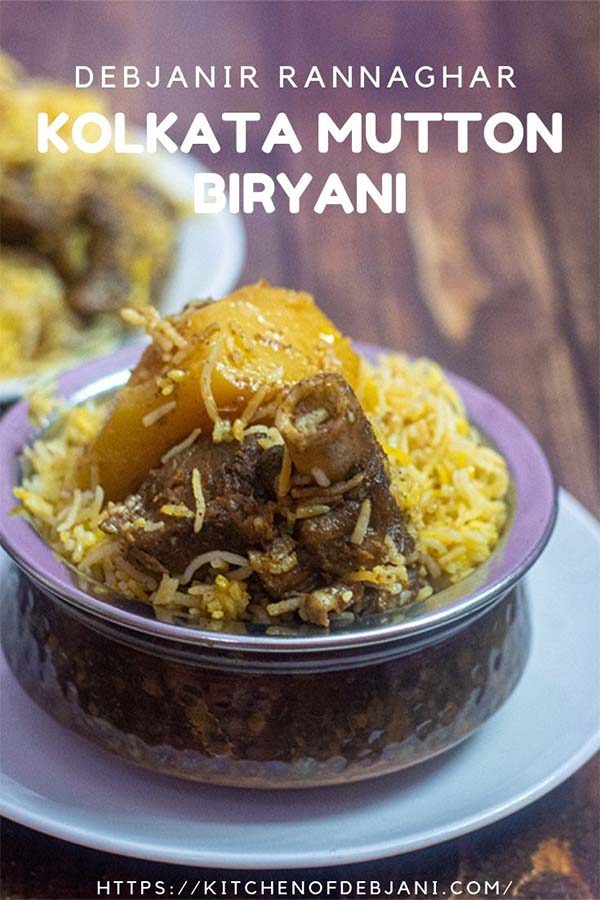

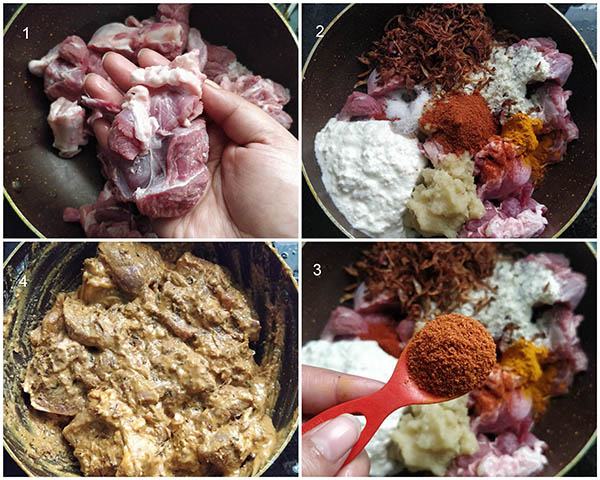
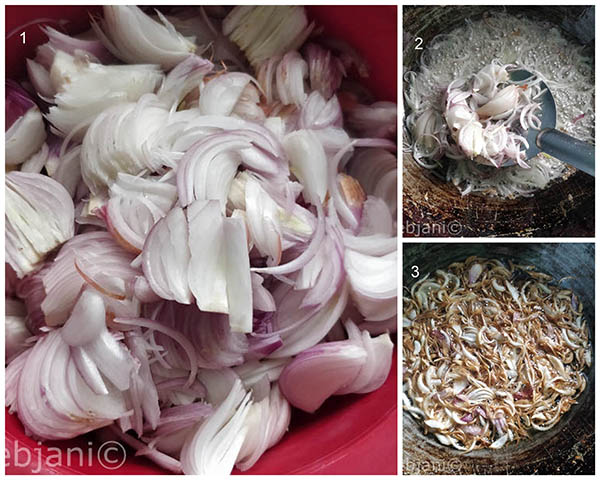
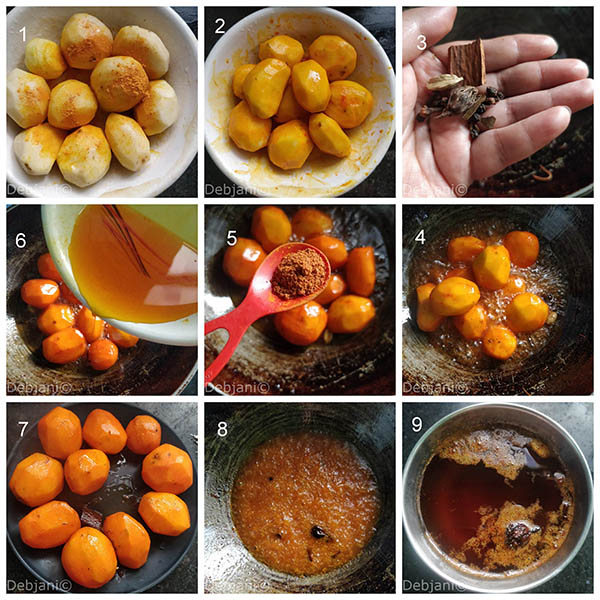
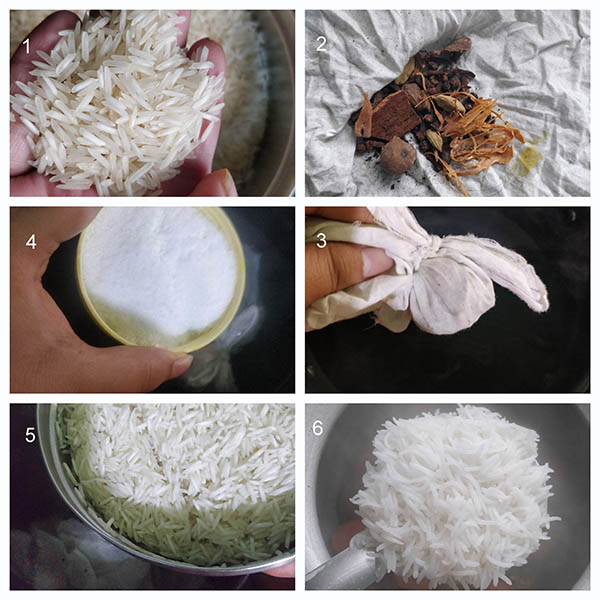
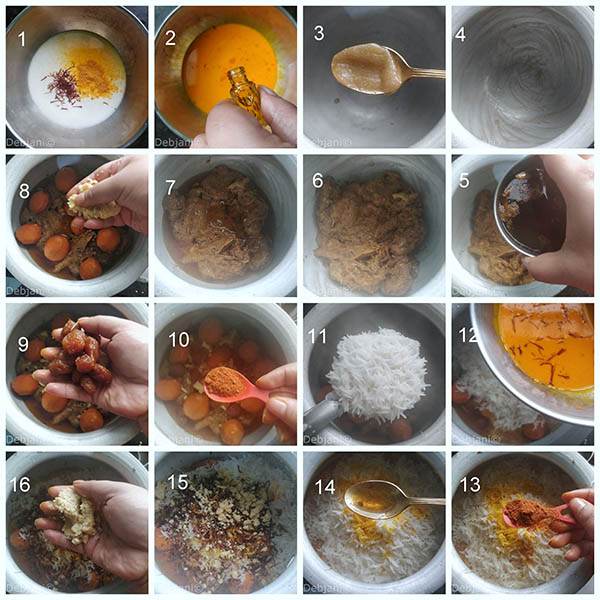
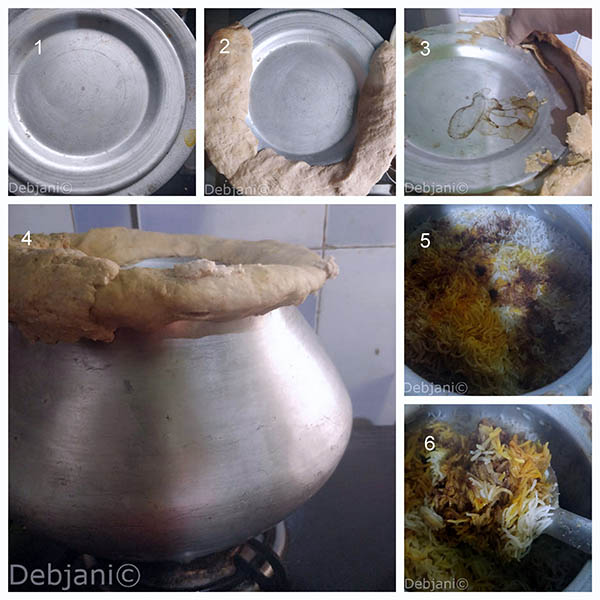


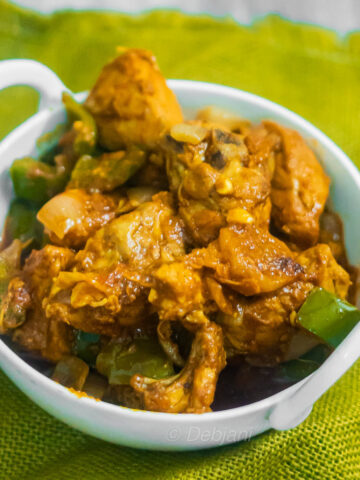
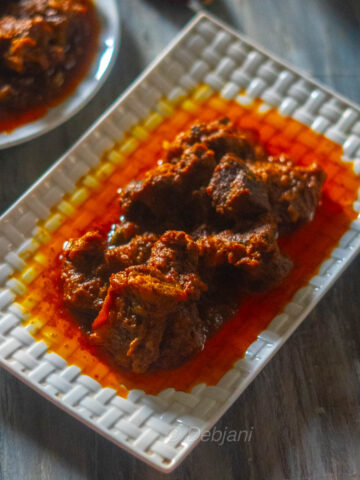
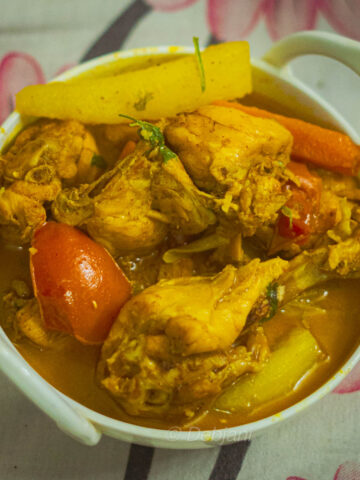
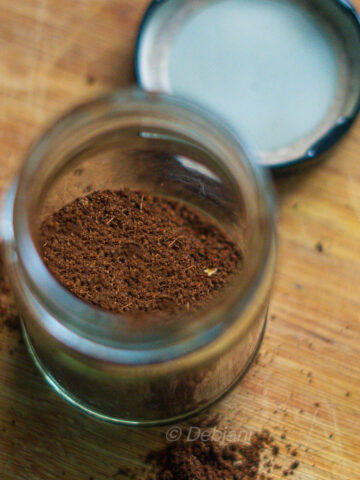
Sharmistha Maity says
Your recipe is amazing Debjani !! Thanks a ton for sharing it ...I have been trying home made biryani for 15 years but I always felt it was not restaurant like until I came across your recipe and now my family is delighted with the home made biryani ... Bhalo theko and keep sharing more of your wonderful recipes